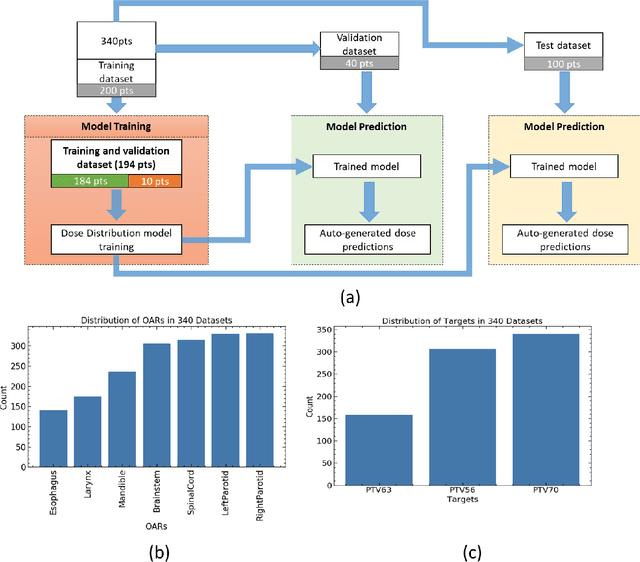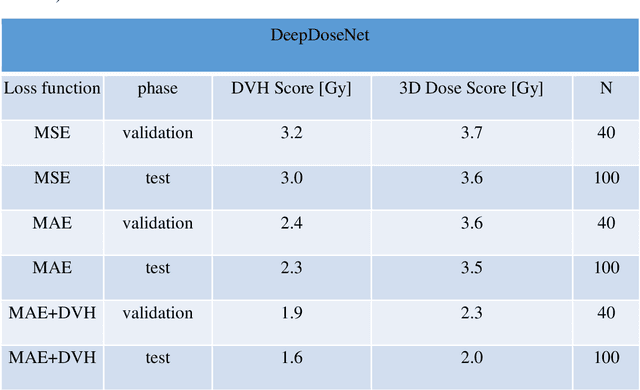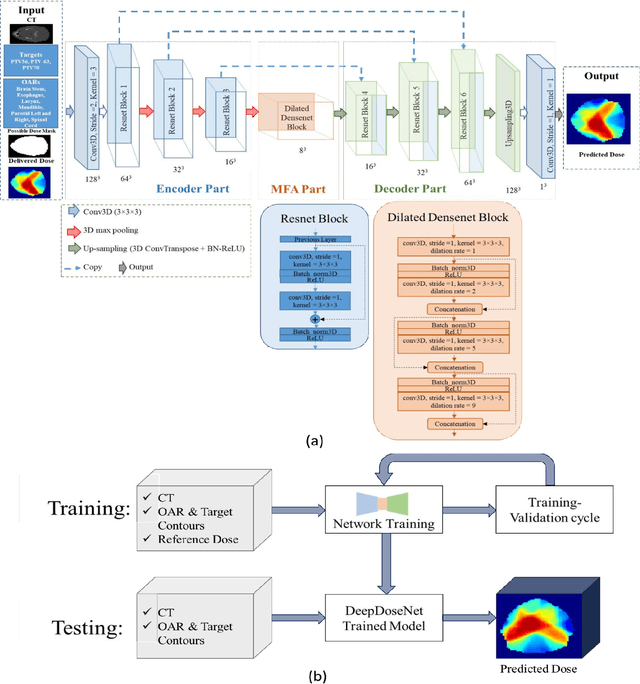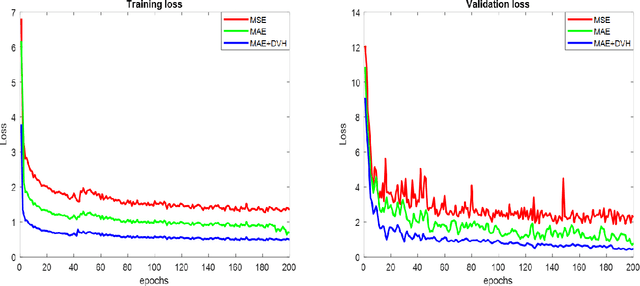DeepDoseNet: A Deep Learning model for 3D Dose Prediction in Radiation Therapy
Paper and Code
Oct 29, 2021



The DeepDoseNet 3D dose prediction model based on ResNet and Dilated DenseNet is proposed. The 340 head-and-neck datasets from the 2020 AAPM OpenKBP challenge were utilized, with 200 for training, 40 for validation, and 100 for testing. Structures include 56Gy, 63Gy, 70Gy PTVs, and brainstem, spinal cord, right parotid, left parotid, larynx, esophagus, and mandible OARs. Mean squared error (MSE) loss, mean absolute error (MAE) loss, and MAE plus dose-volume histogram (DVH) based loss functions were investigated. Each model's performance was compared using a 3D dose score, $\bar{S_{D}}$, (mean absolute difference between ground truth and predicted 3D dose distributions) and a DVH score, $\bar{S_{DVH}}$ (mean absolute difference between ground truth and predicted dose-volume metrics).Furthermore, DVH metrics Mean[Gy] and D0.1cc [Gy] for OARs and D99%, D95%, D1% for PTVs were computed. DeepDoseNet with the MAE plus DVH-based loss function had the best dose score performance of the OpenKBP entries. MAE+DVH model had the lowest prediction error (P<0.0001, Wilcoxon test) on validation and test datasets (validation: $\bar{S_{D}}$=2.3Gy, $\bar{S_{DVH}}$=1.9Gy; test: $\bar{S_{D}}$=2.0Gy, $\bar{S_{DVH}}$=1.6Gy) followed by the MAE model (validation: $\bar{S_{D}}$=3.6Gy, $\bar{S_{DVH}}$=2.4Gy; test: $\bar{S_{D}}$=3.5Gy, $\bar{S_{DVH}}$=2.3Gy). The MSE model had the highest prediction error (validation: $\bar{S_{D}}$=3.7Gy, $\bar{S_{DVH}}$=3.2Gy; test: $\bar{S_{D}}$=3.6Gy, $\bar{S_{DVH}}$=3.0Gy). No significant difference was found among models in terms of Mean [Gy], but the MAE+DVH model significantly outperformed the MAE and MSE models in terms of D0.1cc[Gy], particularly for mandible and parotids on both validation (P<0.01) and test (P<0.0001) datasets. MAE+DVH outperformed (P<0.0001) in terms of D99%, D95%, D1% for targets. MAE+DVH reduced $\bar{S_{D}}$ by ~60% and $\bar{S_{DVH}}$ by ~70%.
 Add to Chrome
Add to Chrome Add to Firefox
Add to Firefox Add to Edge
Add to Edge